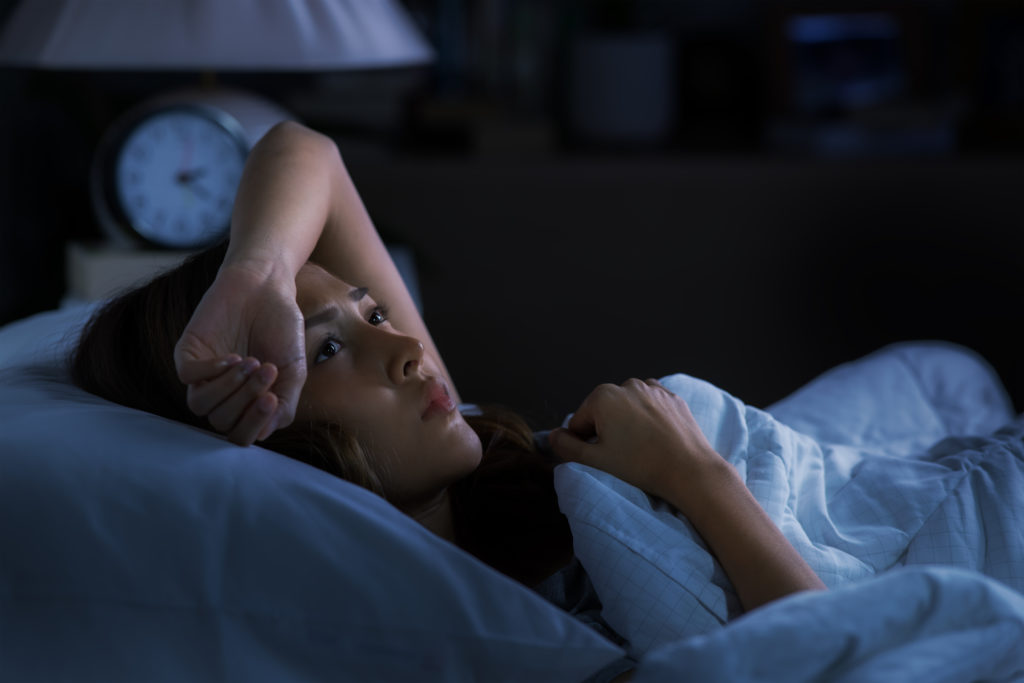
Articles
SleepScore at the ATN Innovation Summit 2025: Why Sleep Drives Everything
Reimagining The World of Sleep SleepScore Labs was proud to take part in the ATN Innovation Summit 2025, an elite gathering…
Introducing SleepScore
We deliver accurate data, actionable insights, personalized coaching and proven outcomes your customers need.
Sleep Insights
Last Published on 22nd June 2025 by SleepScore Labs

When most people go to bed, they hope they can have an uninterrupted night of sleep and wake up feeling refreshed and energized to tackle the day. But this experience is not always the case.
Some might experience an activity-filled night’s sleep that leaves them feeling tired the next day. They may struggle to fall asleep, wake up multiple times, toss and turn, endlessly pull at the bedding, and wake up feeling worse than the night before.
If you can relate to this experience, you’ve had what many describe as “restless sleep.” Although sleep experts are beginning to recognize “restless sleep disorder (RSD)” as a potential new sleep diagnosis in children and teens, generally, restless sleep isn’t a recognized medical disorder.
Restless sleep affects people of all age groups. Here’s what you need to know about this condition, its causes, symptoms, and how to treat it:
Restless sleep is a subjective experience but can also be quantitatively measured by poor sleep quality, frequent awakenings, repetitive movements, and daytime impairment. Because there’s no official medical definition, interpretations vary.
In 1979, sleep medicine organizations described restlessness during sleep as “persistent or recurrent body movements, arousals, and brief awakenings during the course of sleep” in the context of disorders like insomnia and sleep apnea (SleepMedicineReviews, 1979). More recent pediatric studies define Restless Sleep Disorder (RSD) in children by “large body movements and repositioning lasting all night, with ≥5 movements per hour and significant daytime impact” (Kim et al., 2023).
Some signs of restless sleep include:
Restless sleep may affect your sleep duration, quality, and efficiency. A variety of factors can trigger or contribute to restlessness during sleep.
Ideal conditions are dark, quiet, and cool (65–68 °F). Disruptions—like light, noise, or an uncomfortable bed—can fragment sleep (NYPost, 2025; SleepDeprivation, 2025).
Sleep can be disrupted as a symptom of:
Other medical conditions associated with poor sleep are:
Pain can make it difficult for a person to fall asleep. And when they do, sleep may be fragmented and unrefreshing. What’s more, poor sleep can also lower pain tolerance and increase chronic pain symptoms, resulting in restless and poor quality sleep.
Stress is another condition that may contribute to restless sleep. Studies suggest that daily life stress and traumatic stress can limit a person’s likelihood of restful sleep. Frequent stress or trauma is strongly linked with nighttime awakenings, and about 43% of U.S. adults report stress impacting their sleep monthly (NSF, 2025; WDSU, 2025).
Your evening time consumption may also impact your nighttime rest. People who take heavy or spicy meals, caffeine, tobacco, chocolate, and alcohol in the evening time may experience difficulty winding down (sleep onset) and depth.
Exercising is a habit that everyone can benefit from for healthy living. Research suggests that it may promote healthy aging, increase a person’s lifespan, slow down the development of up to 40 chronic illnesses, and improve quality of life.
However, while daily activity improves sleep in general, vigorous exercise less than an hour before bed may delay sleep onset (RealSimple, 2025; SleepHygiene, 2025).
Loneliness is another condition unrecognized as a medical disorder, but it significantly impacts a person’s health and well-being. Loneliness heightens nighttime vigilance and has been linked to poorer non-restorative sleep-in older adults (RealSimple, 2025; SleepDeprivation, 2025).
Short daytime naps (<30 min) can improve alertness, but long or late naps are associated with nighttime sleep inefficiency (SleepHygiene, 2025).
Late-night screen time suppresses melatonin and fragments sleep. Health authorities recommend consistent sleep schedules, cool dark environments, pre-sleep routines, no screens near bedtime, and avoiding substances before bed. Sleep hygiene includes practices that support healthy sleep. Some of these practices, as recommended by the CDC, include:
Insomnia is a clinical sleep (disorder) diagnosis that occurs when a person experiences difficulty falling and staying asleep and difficulty having adequate and quality sleep even when their circumstances support sleep. Only a healthcare professional can diagnose a person with insomnia.
Symptoms of insomnia are:
Before a person can be diagnosed with insomnia, they must show symptoms that:
On the other hand, restless sleep is subjective and non-diagnostic—it may occur with or without insomnia. Symptoms of restless sleep are often seen as subjective and may vary from person to person. These symptoms don’t have to meet any criteria for a person to report that slept restlessly.
Occasional restless nights are normal. For persistent restless sleep that affects daytime function, consider:
People across different age groups experience restless sleep. Their symptoms may vary according to age group, and they may be associated with underlying sleep disorders or medical conditions. Here’s what restless sleep looks like in these age groups:
CDC recommends that infants from 0 to 12 months have 12 to 17 hours of sleep a day. Nighttime awakenings are common, but typically don’t affect development or maternal mood. Therefore interrupted sleep during infancy may doesn’t necessarily mean restless sleep. Plus, experts also state by 3 months, many infants achieve ~5-hour sleep stretches.
Infants may show symptoms of sleep disturbances associated with restless sleep like:
Always recommended to consult with your child’s doctor/pediatrician for suggestions if there is still concern about your child’s sleep/health.
Parents may also notice restlessness in the way their toddlers sleep. Researchers mention three factors that influence an infant’s sleep: temperament, soothability, and fear.
Restless sleep is a common sleep complaint in children. Pediatric RSD occurs in ~7.7% of children and is defined by ≥5 large movements per hour and daytime disturbances (Kim et al., 2023).
Studies suggest that restless sleep in children may be a symptom of medical or sleep conditions like
The CDC recommends that although 8 to 10 hours of sleep is recommended, research suggests that 72.7% of students get <8 hours of sleep on weekdays. Teens may go to bed late, struggle to fall asleep, and experience sleep disturbances because of habits like excessive social media use, alcohol and drug use, partying, and engaging in other nighttime social activities, e.t.c. Consistent routines can protect mental health (Tuhin et al., 2025).
Adolescents with insomnia and <7.7 hours of sleep have ~3× higher risk for high blood pressure (Heart.org, 2025).
The prevalence of sleep disturbances and problems in adulthood is widely studied since research suggests the have sleep disorders. Adults should have more than 7 hours of sleep. However, more than 1 in 3 US adults don’t get enough sleep. Globally, stressed or anxious states, financial pressure, and environmental factors are top contributors to poor sleep. (ResMed, 2025)
Although sleep disturbances are not a normal part of aging, they’re common in older adults. Some sleep changes people may experience as they grow older that may also be associated with restless sleep include:
Poor sleep and may impact a person’s ability to have well-rested nights, affecting overall mental and physical health:
Restless sleep may be considered a non-diagnostic experience by adults but is recognized formally in children. It affects all ages through fragmented sleep, nighttime disruptions, and daytime impairment. Improving sleep hygiene, consistency, and lifestyle habits can significantly help. Persistent issues warrant professional evaluation to address underlying conditions.
If you’re struggling with restless sleep, the first step toward improvement is understanding your unique sleep patterns—when you wake up, how often you move, and what’s impacting your rest. That’s where SleepScore comes in.
The free SleepScore app offers science-backed insights into your nightly sleep without requiring any wearables. Using sonar technology validated in peer-reviewed studies, SleepScore tracks your breathing and body movement from your bedside—giving you a detailed look into your sleep quality each night.
With the SleepScore app, you can:
Whether your goal is fewer restless nights, better focus during the day, or healthier long-term sleep habits, the SleepScore app empowers you with tools grounded in science and tailored to your needs.
Start sleeping smarter today—download the free SleepScore app and take the first step toward better sleep. Available on the App Store and Google Play.
Sleep Well!
Sources